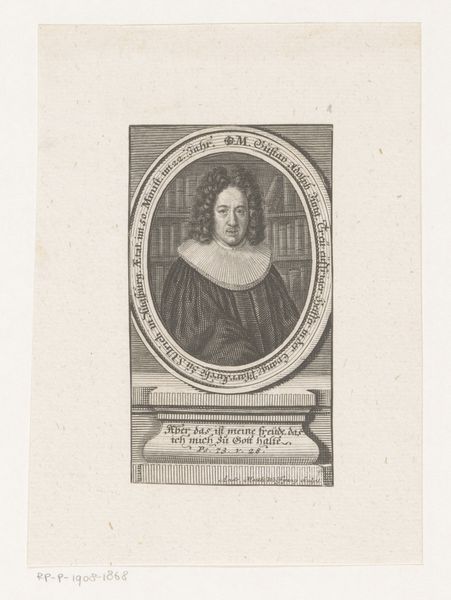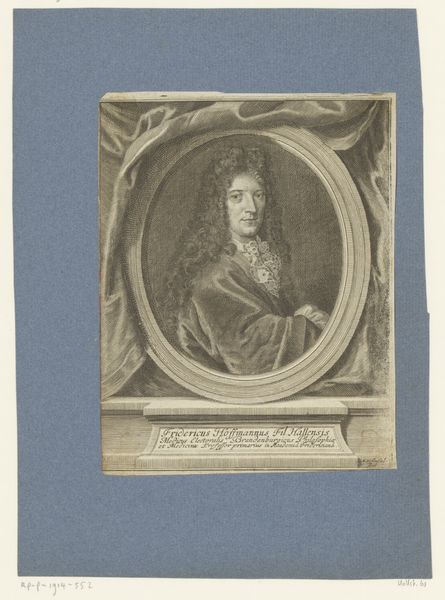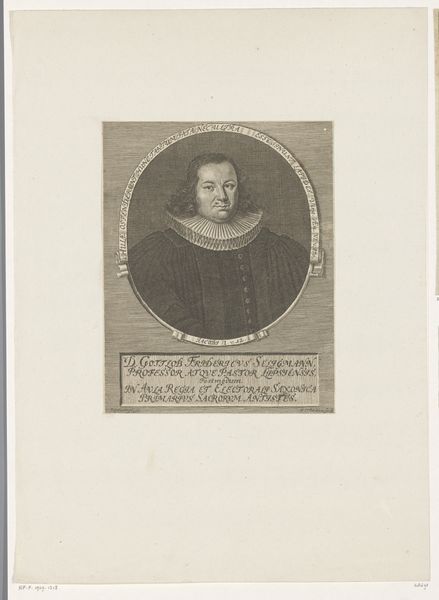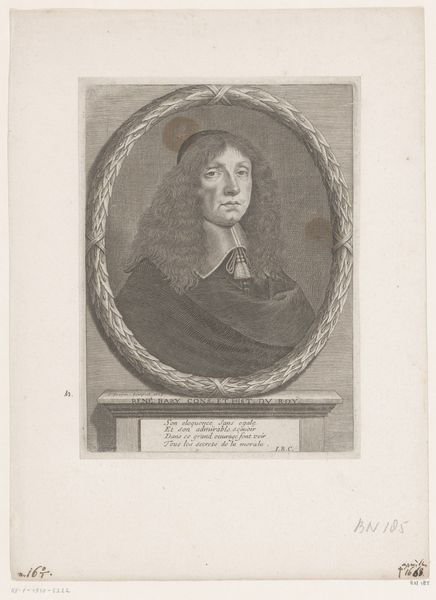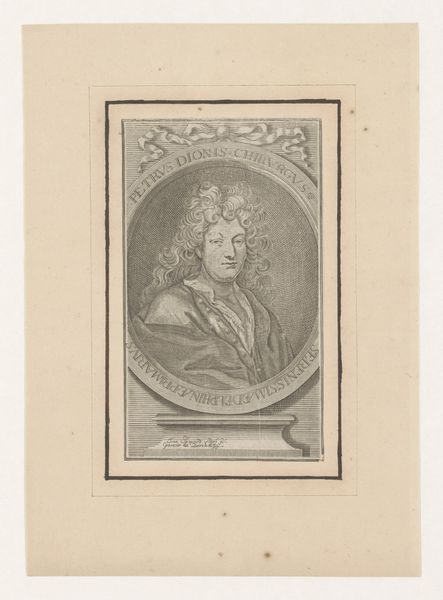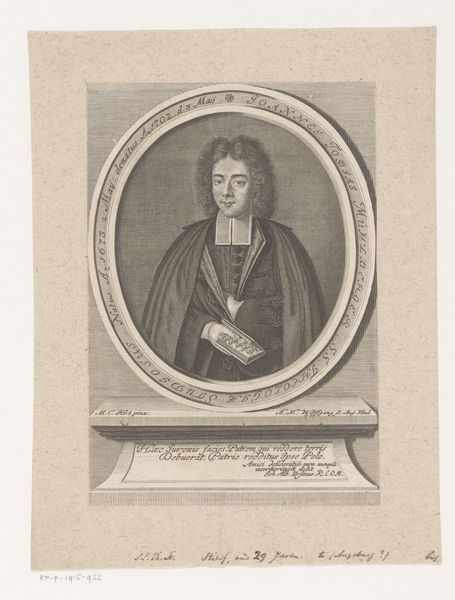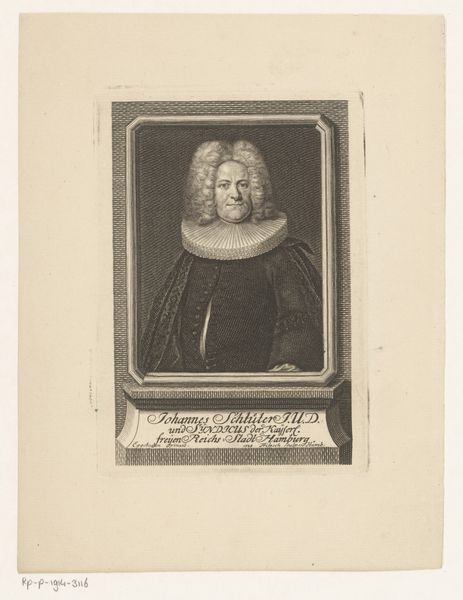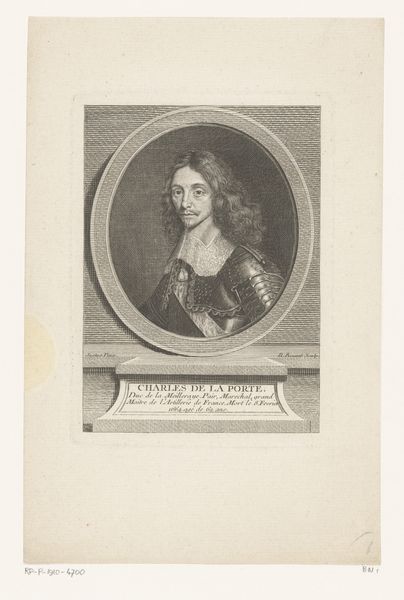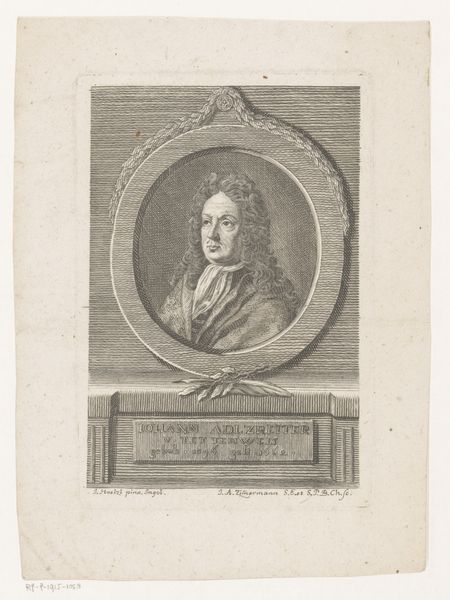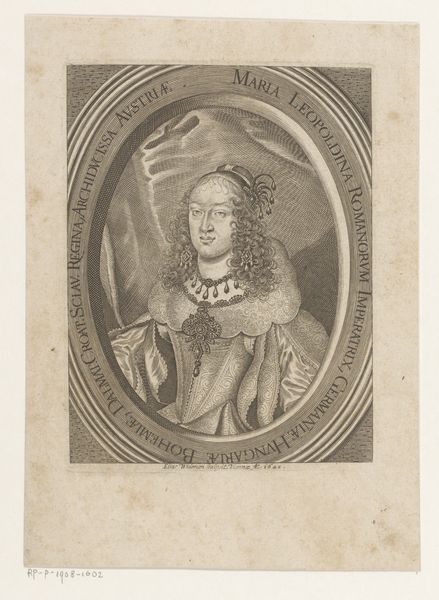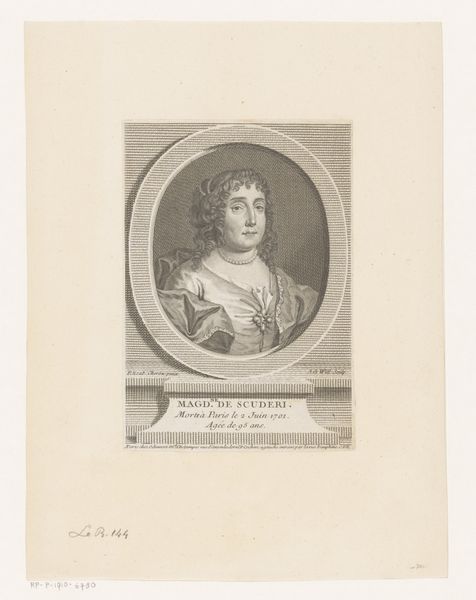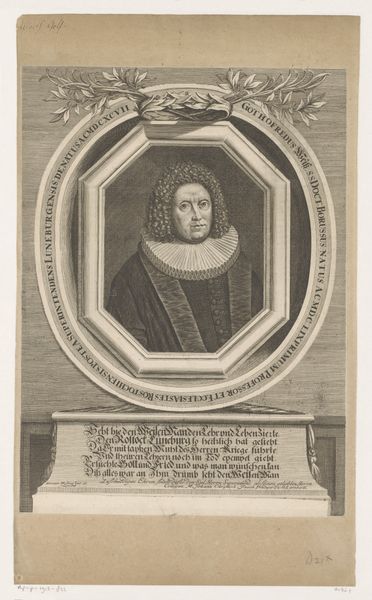
print, engraving
#
portrait
#
baroque
# print
#
academic-art
#
engraving
Dimensions: height 183 mm, width 144 mm
Copyright: Rijks Museum: Open Domain
Curator: Looking at this print, "Portret van Johann Daniel Arcularius," dating anywhere between 1690 and 1799, one can’t help but feel transported back to the era of elaborate portraiture designed to signal power and status. Editor: Indeed, it immediately evokes a sense of rigid formality. The dark costume, ornate oval frame—it’s all quite… heavy. The material details speak volumes about the production of images in this era; it is an engraving after all. How do you understand its socio-historical role? Curator: Well, Arcularius was a Doctor of Theology, which meant his intellectual authority intertwined with the structures of power in his time. This image operates as both a commemoration and a strategic projection of his persona—he had a particular role and a particular vision for how it was understood. Editor: The fact that it's a print also underscores something about distribution and consumption. Prints facilitated a certain kind of image economy. I am always curious about understanding who produced this engraving and for what kinds of consumption was this material. Curator: Exactly. Prints like this enabled broader access, circulating notions of scholarly importance and personal authority, but of course the social dimensions were pretty much closed, pretty much male. I mean this engraving speaks to the gendered nature of intellectual and religious authority in that time, doesn't it? It is a story about class and intellectual elites. Editor: Agreed. Focusing on the engraved lines, and how the light and dark convey texture is important as a demonstration of craft here; we could dive deeper into who produced it and from what workshops. And ultimately to understand how prints informed perceptions, shaped values, and even potentially, contributed to social stratification through visibility and access. Curator: And isn't that interplay—between material reality and broader social narratives—what makes examining artworks so enriching? It really compels us to reflect critically on history’s complex and often deeply unequal fabric. Editor: I agree. This careful look at the processes and production of an artwork always highlights stories about labour and power and class—revealing what can sometimes remain unseen.
Comments
No comments
Be the first to comment and join the conversation on the ultimate creative platform.
